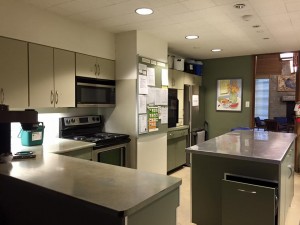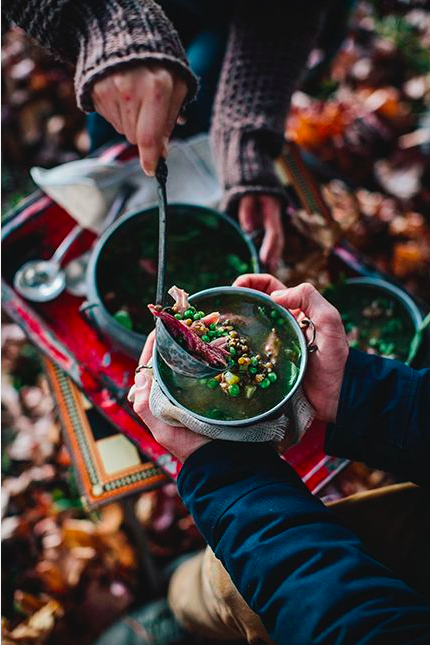Blog Post 3 – The Project Progresses
We have now reached the halfway point of the semester and our community project is well on its way.
![]() Weekly Objectives and Achievements
Weekly Objectives and Achievements
This week’s first objective was to visit three community kitchens within our assigned neighbourhoods. Our second objective was to transfer the data onto the tables we produced for easier analysis. Lastly, we were to complete this week’s blog post.
Our achievements this week aligned with two out of the three objectives. We completed two kitchen visits to collect our data on Wednesday. This was completed similar to last week although the role of each member was switched so everyone had the opportunity to complete each task. This blog post was completed by Friday, and like last week each person contributed their ideas before one group member put the blog together. We were able to complete these tasks due to our open communication between group members and by assigning weekly tasks to each of us. We did not complete our objective of transferring of data to tables for analysis as of yet. This is of no concern as we have allowed for flexibility in our timeline and as a group we will set a new deadline for the upcoming week.
 Visiting the community kitchens
Visiting the community kitchens
These last two weeks have been filled with excitement as we delved into the community in search for insight and facts, which will hopefully benefit the community kitchens and their surrounding communities.
As we looked back at our community kitchen visits we deemed them to be a success (four kitchens were visited and the data collected), but it was not without its ups and downs.
Our experiences were not unlike those described in the This American Life: Poetry Slam 2011 Latin Liver podcast which discusses the production of Foie Gras, where Geese are force-fed through a process called “gavage” to fatten them up and engorge their liver. This is an ethical dilemma for many chefs as Foie Gras is the epitome of high-class cuisine, but the treatment of the geese is inhumane and this results in significant controversy surrounding the dish. Consumer demand is thus leading chefs, like Eduardo and Dan to change the way that Fo ie Gras is produced. This example of scope change is a caused by consumers changing the way a product is produced due to their beliefs and values. Similarly a scope change in our project occurred during our community visits, though driven instead by the community kitchens. Each kitchen we visit was unique with such differences as demographics, community, goals, beliefs, income, management strategies, and their perceived needs for an effective community kitchen space. For example some sites were for those with very specific needs such as groups with physical or mental disabilities. Therefore the programs were (or would potential programs would be) targeted towards these groups. As a result, the scope of our
ie Gras is produced. This example of scope change is a caused by consumers changing the way a product is produced due to their beliefs and values. Similarly a scope change in our project occurred during our community visits, though driven instead by the community kitchens. Each kitchen we visit was unique with such differences as demographics, community, goals, beliefs, income, management strategies, and their perceived needs for an effective community kitchen space. For example some sites were for those with very specific needs such as groups with physical or mental disabilities. Therefore the programs were (or would potential programs would be) targeted towards these groups. As a result, the scope of our
project changed with each community kitchen we visited. As components of our data collection were only pertinent to certain kitchens and we would then change our discussion to relate to each kitchen and their needs.
Flexibility and keeping an open mind have been essential to the success of our project thus far. For example, our biggest challenge was having kitchens agree to meet with us. We could meet with only two of kitchens within our initial contact group, and thus had to contact additional kitchens. There were also some difficulties with scheduling meetings, which we attempted to minimize by pairing our group members with those who had similar schedules. In order to account for everyone’s schedules our visits took place on two different days over two weeks. Our hindsight to schedule with kitchens as early as possible gave us the flexibility to schedule these visits over two weeks.
During our visits flexibility was equally important. In one kitchen we were unable to make our kitchen observations at first because the kitchen was being used. So instead we continued the survey, had the Manager answer the questions regarding the kitchen space, and were later able to peek in the kitchen for a moment to take pictures.
 Although minor difficulties, these experiences were not unlike Dan’s struggles in trying to implement humane Foie Gras production in New York. Dan took inspiration from Eduardo, but had to adapt the Spanish strategy to fit in the new environment. He makes changes each year, still hasn’t come up with a solution that works, but keeps trying.
Although minor difficulties, these experiences were not unlike Dan’s struggles in trying to implement humane Foie Gras production in New York. Dan took inspiration from Eduardo, but had to adapt the Spanish strategy to fit in the new environment. He makes changes each year, still hasn’t come up with a solution that works, but keeps trying.
Overall, in our project we face challenges and must change our approaches to meet those challenges. We have to expect that things won’t go perfectly on the first try and thus need to keep reassessing along the way. This includes changing scope as the needs of the kitchens and community changes because what works for one community kitchen will not necessarily be the right fit for another group of people. We have to be cognizant of the fact that even though we are developing general themes as recommendations for the kitchens in our neighbourhood, there is no “one size fits all” solution.
As the process continues we must remain flexible and like Dan Barber and continue to change and tweak our project so we best achieve our goals in order to complete a project which can best impact our community. This is important in any project whether it is developing a delicacy or a community.
 Upcoming objectives and strategies:
Upcoming objectives and strategies:
Now that our data has been collected it is time to make sense of it. We will begin by first completing our last weeks objective of organizing our data onto a table. The table will included headings for programs, facilities and equipment, accessibility, and projections or goals for the future.
Our group’s next objective is to complete an analysis of our collected data. this will be done by addressing our guiding questions stated in our proposal methods.
- How do the goals of the individual community kitchens relate to City of Vancouver’s Food Strategy goals?
- What community kitchens would benefit from further resources and investment from the City of Vancouver?
- What assets are currently present in community kitchens and how can the City of Vancouver further develop those assets?
Using our analysis we will make comparisons and extract themes about usage, assets, kitchen facilities and ways the city may support already existing resources, which may lead to improved use of community kitchen facilities within the city of Vancouver.
In order to achieve both objectives we will meet as a group.
Reference
452: Poetry Slam 2011 (2011, Dec 2). [Audio podcast]. Received from http://www.thisamericanlife.org/radio-archives/episode/452/poultry-slam-2011?act=3#play
